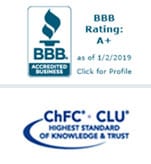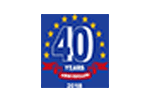![]()
In 2015, a 30-day supply of Humira, a prescription drug used to treat arthritis, cost $2,669 without insurance. In 2018, that same 30-day supply could run you a solid $5,000. Compare that to the average uninsured cost of Humira in Canada—about $2,300—and the outlines of a uniquely American nightmare begin to take shape. After the well-publicized scandal of Valeant CEO Martin Shkreli, who raised the price of Daraprim, a life-saving cancer drug, by over 5,000% in 2015, it’s hardly a secret that the prices of our prescriptions are based more on the whims and appetites of Big Pharma than the quality of the medications themselves. And with the cost of pharmaceuticals rising at ten times the rate of inflation, it doesn’t look like that will change anytime soon. So, what can you do to keep skyrocketing drug costs from blowing a hole in your budget.
1. Find A Different Pharmacy
If trips to the drugstore leave you with a bad case of sticker shock, the cure might be down the street at the local Costco. Consumer Reports conducted a national price check that compared the cost of five common generic drugs at 200+ pharmacies across the U.S. They found that the price of a prescription can vary by several hundred dollars—even between pharmacies in the same zip code. The study also found that pharmacy chains like CVS and Rite-Aid consistently charged more for prescriptions, while warehouse stores with built-in pharmacies offered the best prices on average.
2. Bypass Insurance
If your prescriptions are billed to your health insurance, and you haven’t met your deductible, you may be paying more in co-pays than for your medication. A USC study found that Medicare users overpaid about 25% of the time when prescriptions were processed through their insurance. In fact, depending on your plan, you could be overpaying by up to half the market price.
The solution?
Ask your pharmacist for the cash price. Until recently, some drug plans contained “gag orders” which prevented pharmacists from volunteering this information. Congress voted unanimously to ban these restrictions in September. However, some pharmacists may still be wary of telling you about out-of-pocket deals unless you ask them directly. It’s also important to remember that cash price purchases will not count toward your deductible.
3. Buy in Bulk
You already know that buying in bulk can save you money at the grocery store. The good news is that it works at the pharmacy, too. Because retailers often buy pharmaceuticals in bulk, it’s often possible to get a discount if you buy a 90-day supply of medications you take regularly.
4. Talk to Your Doctor
High drug prices got you down? Let your prescribing physician know, especially if you are struggling to afford necessities or have considered rationing your medications. They might be able to prescribe a generic or suggest a more affordable alternative.
5. Do Your Research
If all else fails and you still feel you’re paying too much for a necessary medication, it can pay to do your research. PharmacyCoupons and GoodRx both offer manufacturer’s coupons that can reduce your out-of-pocket costs on non-covered and insurance-restricted drugs.
6. Work with a Medicare Professional
If you qualify for Medicare, make sure you get the most out of the annual open enrollment period between October and December. A Medicare Professional can help you find a plan that covers your prescriptions without outrageous premiums or copays.


Sara McKinney
saractag@gmail.com
Sara is a recent graduate of Kalamazoo College and a new addition to the Cowen Team. Her responsibilities include IT support, event planning, and general administrative assistance.




